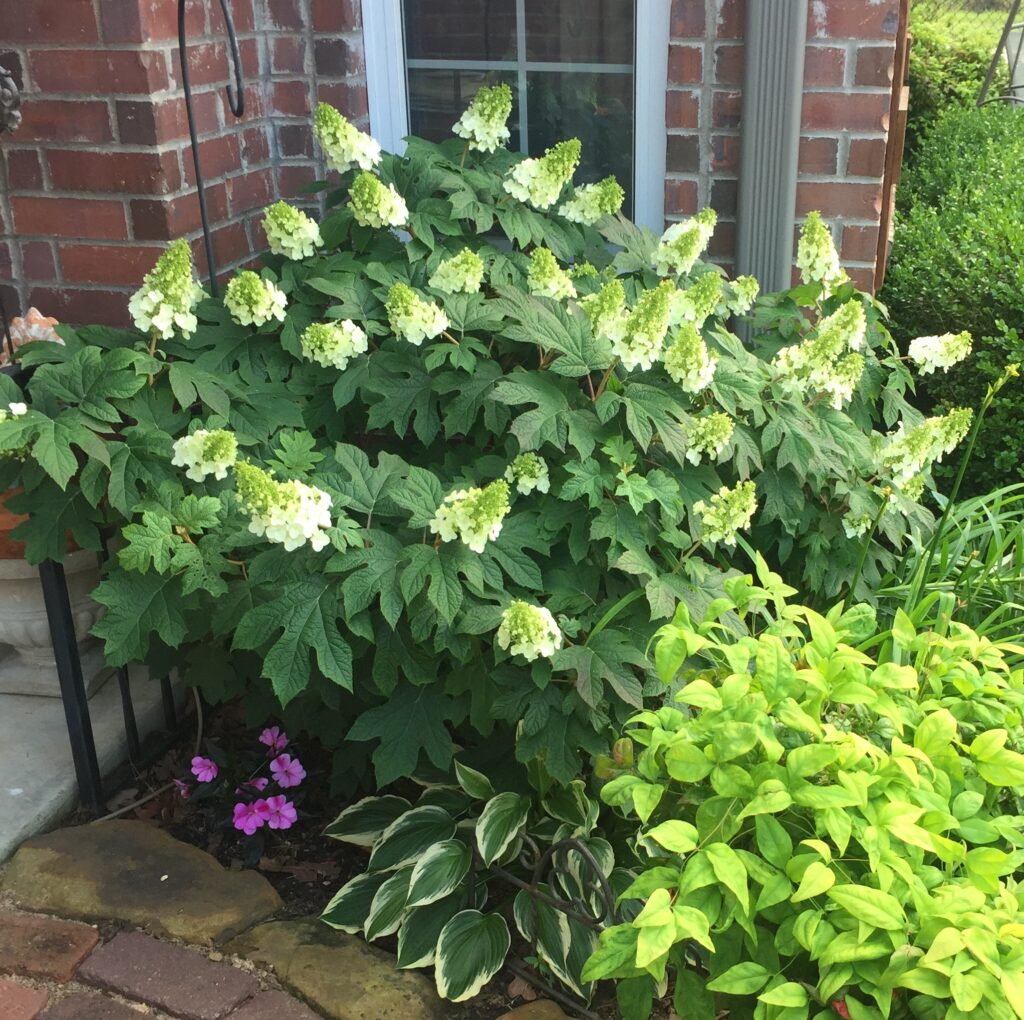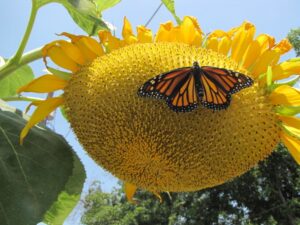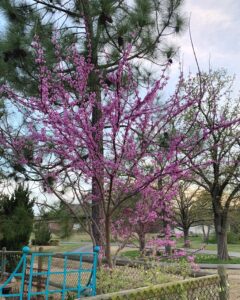Kathy Berryhill
Creek County Master Gardener
Most gardeners are familiar with the massive multi-color blue and pink blooms of the common hydrangea. Depending on the soil Ph, their massive mop-headed blooms reliably pop out in mid-summer and last through fall. New varieties even bloom “endlessly” now. However, my preference is for a sister plant called the Oakleaf Hydrangea (Hydrangea quercifolia). While it can be a little less showy, it delivers quite the stunning show with almost year-round interest! This plant can really take our finicky weather if planted with some shade protection and in a rich, moderately draining soil.
The Oakleaf Hydrangea is native to the southeast United States. It is deciduous (sheds its leaves annually), loves shade and produces massive leaves resembling those found on an oak tree. Breeders first began producing cultivars in the early to mid-20th century, and gardeners now have multiple varieties available to suit their landscaping needs.

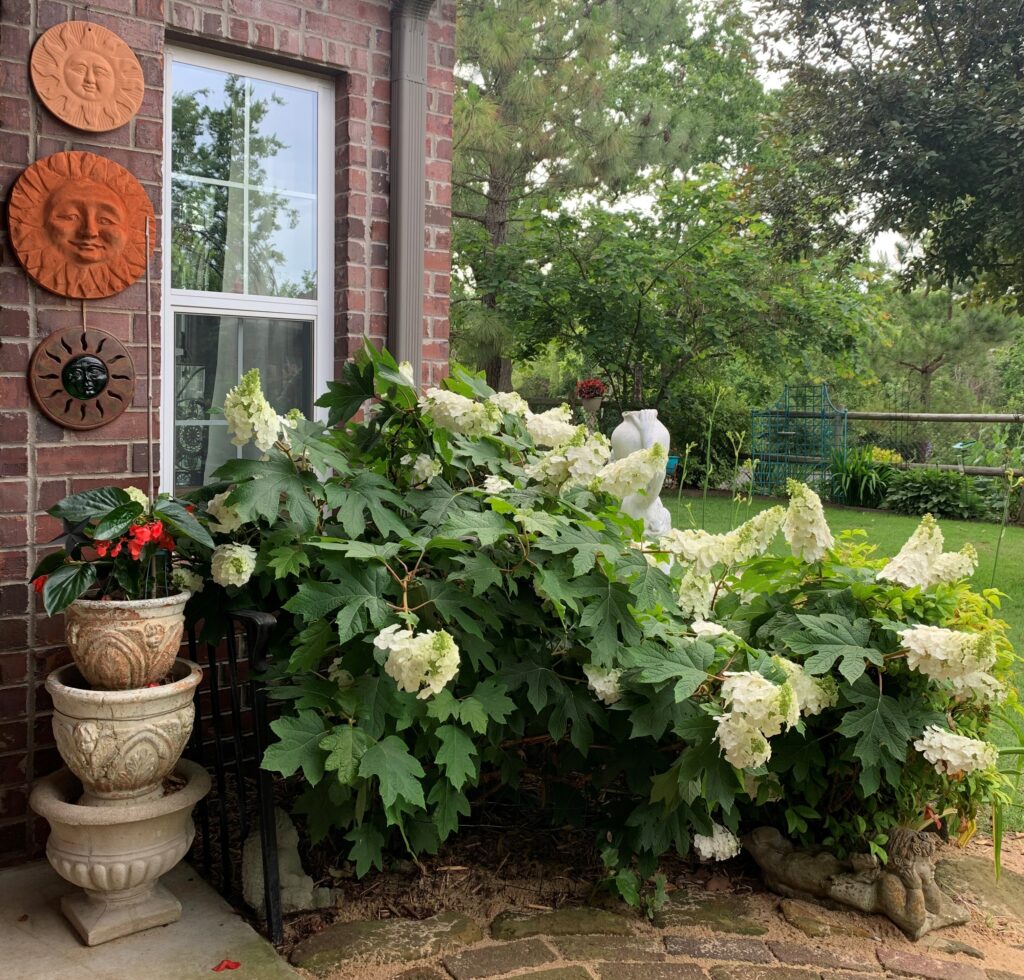
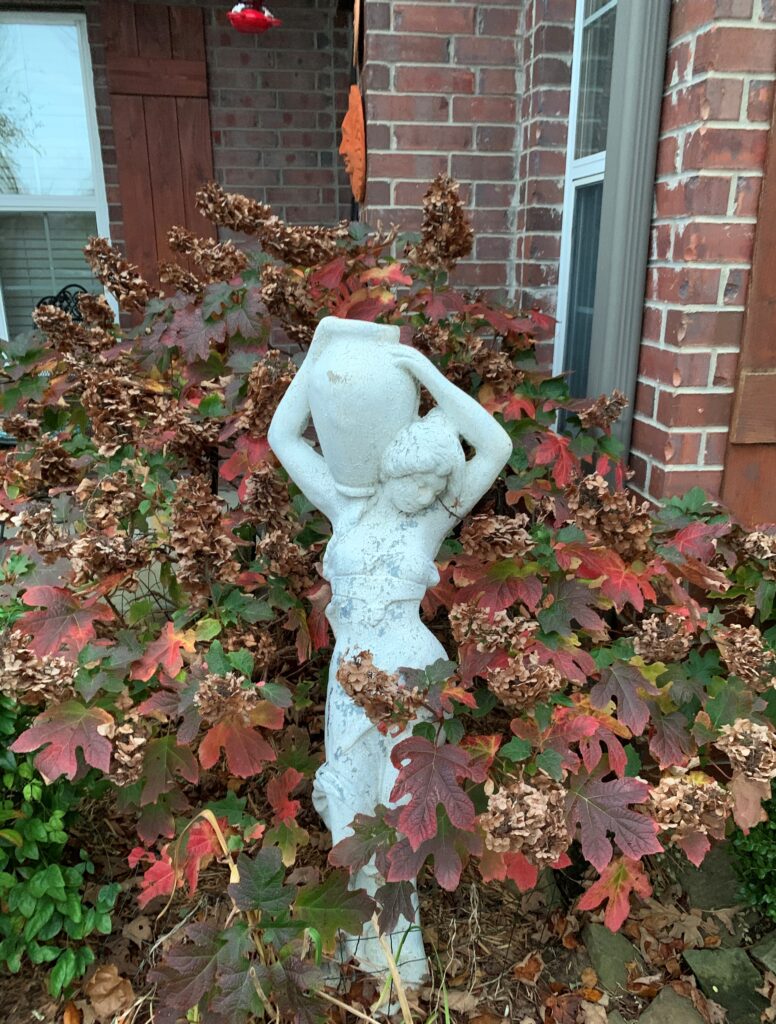
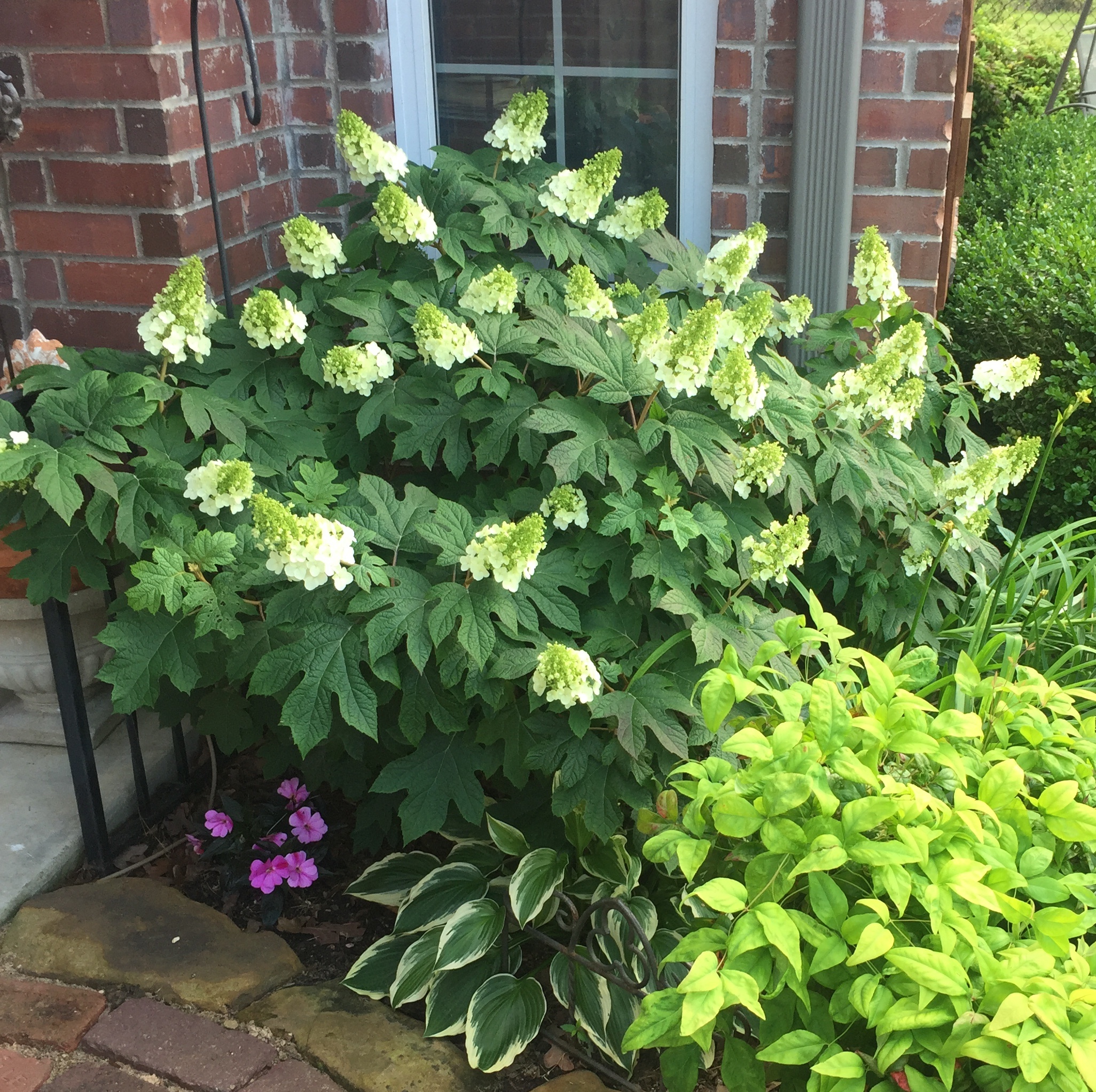
The Oakleaf Hydrangea’s needs are fairly simple. While it can tolerate some morning sun, providing afternoon shade is vital in our area as the intense heat will quickly wilt the leaves. A northeastern exposure in the yard is best. Rich, well-drained soil is recommended. If your planting site has heavy clay, take the time to amend the soil deeply. Doing so will ensure good drainage and encourage root development. Keep the soil evenly moist, avoiding extremes of either dry or soggy soil. Fertilize per package instructions with all-purpose plant food (10-10-10) when planting to provide essential nutrients. To encourage future growth, fertilize in early spring with a slightly higher nitrogen content fertilizer (15-10-10). Repeat this application in late summer.
While purchasing a plant is the easiest and quickest way to start an Oakleaf Hydrangea, other methods work well. Propagating with cuttings is fairly straightforward. In the early spring, select a stem tip with two leaves, cutting it to 3”. Dip the tip in rooting hormone, and place in moist sand. The cut end will begin to swell as roots form. After 6 weeks the cutting is ready to be transplanted.
Propagation can also occur by taking a long stem of the plant, laying in on the ground and placing a rock on top of it. While still connected to the mother plant, new roots will form. Keep this area undisturbed throughout the growing season to ensure that root growth has occurred. In the fall, the new clone can be cut from the “mother” plant with pruners, and transplanted.
The Oakleaf Hydrangea’s growth is noticeable in late winter. The flower bud begins to swell on the old woody stems as oakleaf hydrangeas flower on old wood carried over from the year before. For that reason, only prune right after flowers have finished. The large deep green leaves appear as the weather warms and is followed by cone-shaped clusters of flowers up to 10” in length. The Pee Wee Oakleaf in my garden blooms in white and then fades to a light pink, before settling into a creamy tan. The magnificent blooms are beautiful when dried and can be used in floral arrangements. Finally, the best show of all occurs in fall as the leaves turn splendid shades of orange, red and purple.
Give the Oakleaf Hydrangea a try. All in all, it is an outstanding, low-maintenance shrub!
Happy Gardening!

